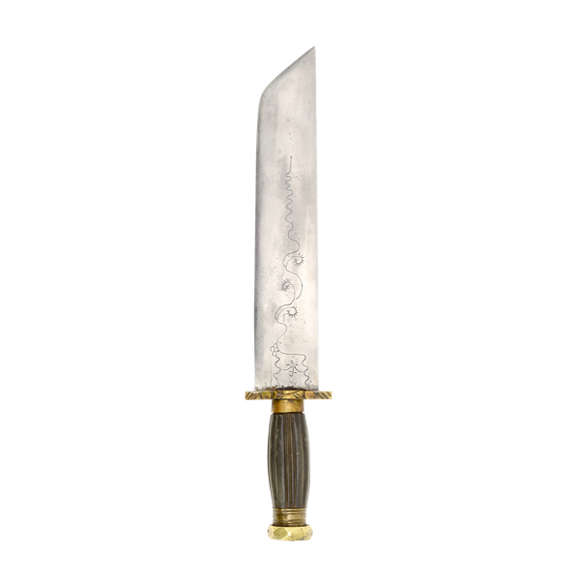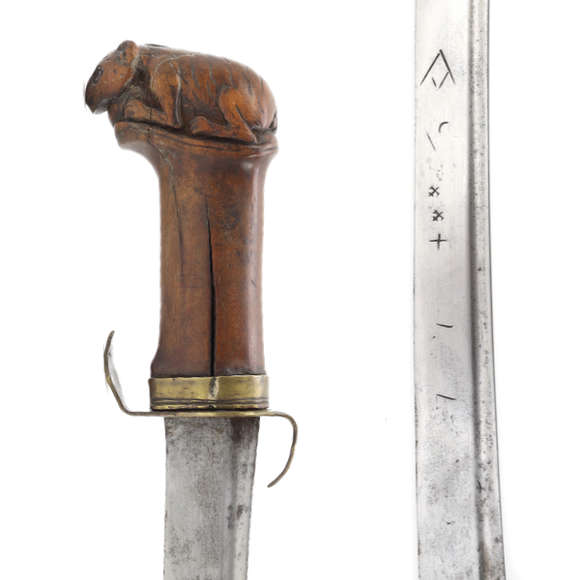Broad bladed example with horn hilt and engraved blade.
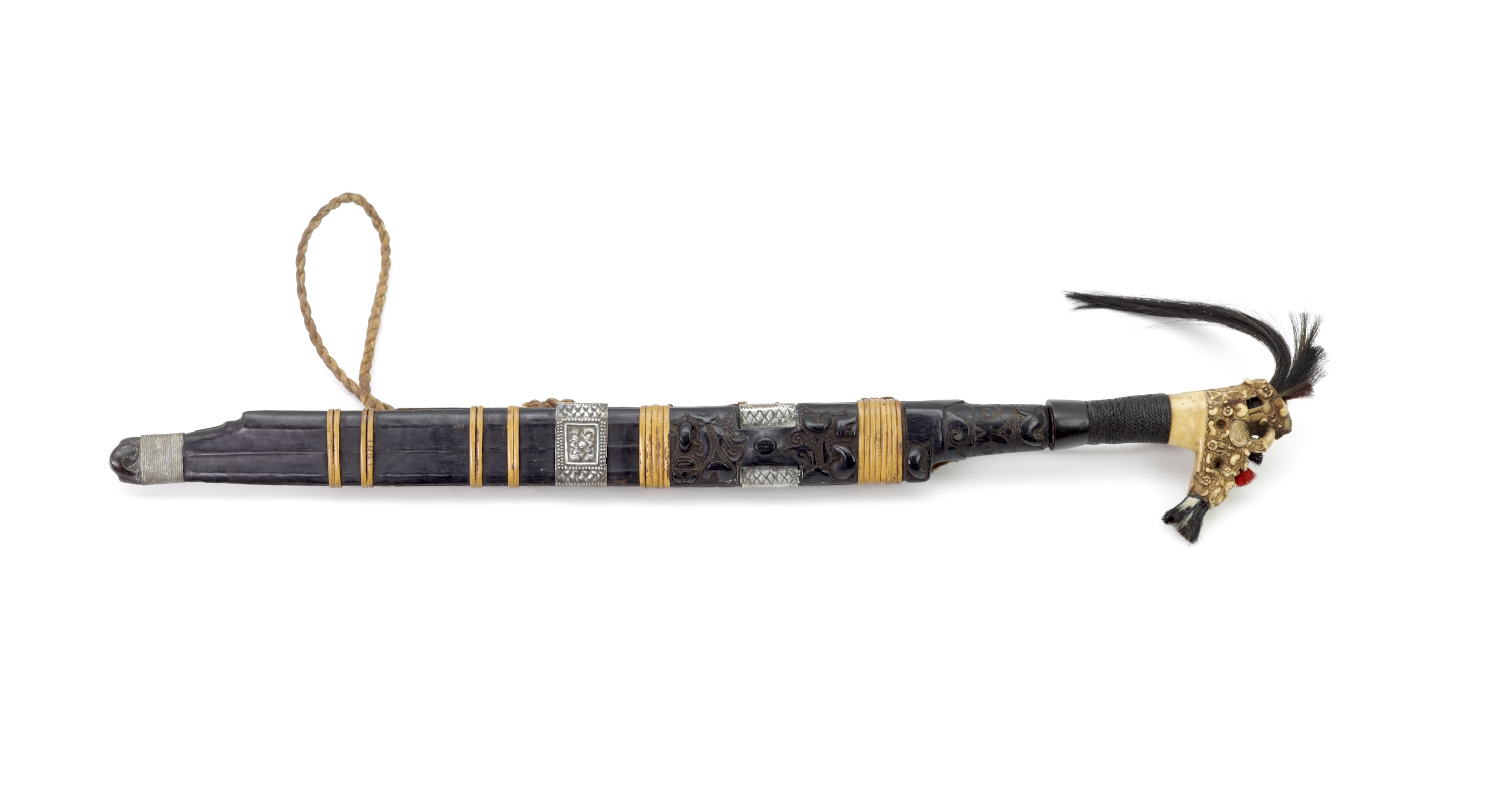
Sheathed 66.5 cm
Sword
cm
Base
Middle
5 cm from tip
Base
Middle
5 cm from tip
from hilt
Iron, stag horn, wood, silver, rattan, plant fiber, gutta-percha, goat hair, human hair
Sarawak, Borneo
19th century
Dutch antique art market
Description
A fine mandau of the Dayak headhunters of Borneo with an exceptionally carved hilt. The blade has a narrow base and exhibits considerable widening towards the end. The spine is slightly upward-sloping, a feature mostly seen on northern blades. The oblique tip is of a type referred to as leng or monong in the Long Way Dayak language.1
The blade is ground in the typical Dayak way, having a concave surface on the left, convex on the right. The right side is decorated with engraved lines, dots, and a series of 13 copper inlaid dots.
Notes
1. S.W. Tromp; Mededeelingen omtrent mandau's. Den Haag, 1887. Published in Internationales Archiv für Ethnographie, International Gesellschaft für Ethnographie; Rijksmuseum van Oudheden te Leiden, 1888. Volume 1, pages 22-26.
Hilt
The finely carved hilt of this mandau is about as good as they come. Made of deer antler, it is meticulously carved with designs of leeches moving in and out of a network of branches. Also seen are a number of fine spiral carvings and demonic heads. On the rear of the hilt is a so-called "four wind direction" carving, very skilfully executed.
The hilt is further decorated with dyed goat hair and some tufts of human hair, the latter was carried only by senior Dayak. The hilt itself also suggests it was carried by someone very senior, perhaps a tribe leader.
Scabbard
This scabbard was associated with the piece by the previous owner. It is, nevertheless, a very good stylistic match and fits the sword perfectly. Trade in parts such as hilts and scabbards was very common in the region, so this marriage is an appropriate one as long as this information keeps traveling with the piece.
It is made of dark hardwood with a fine silk gloss polish and further adorned with silver plates that all point towards it being made for a wealthier and more important individual. The leech and spiral carvings match those on the hilt.
Attribution
The sword is probably from the Saribas of Sarawak in the northwestern part of Borneo. The Saribas tribe is a subdivision of the Iban, also known as Sea Dayak. They were known as ferocious fighters on land and sea.

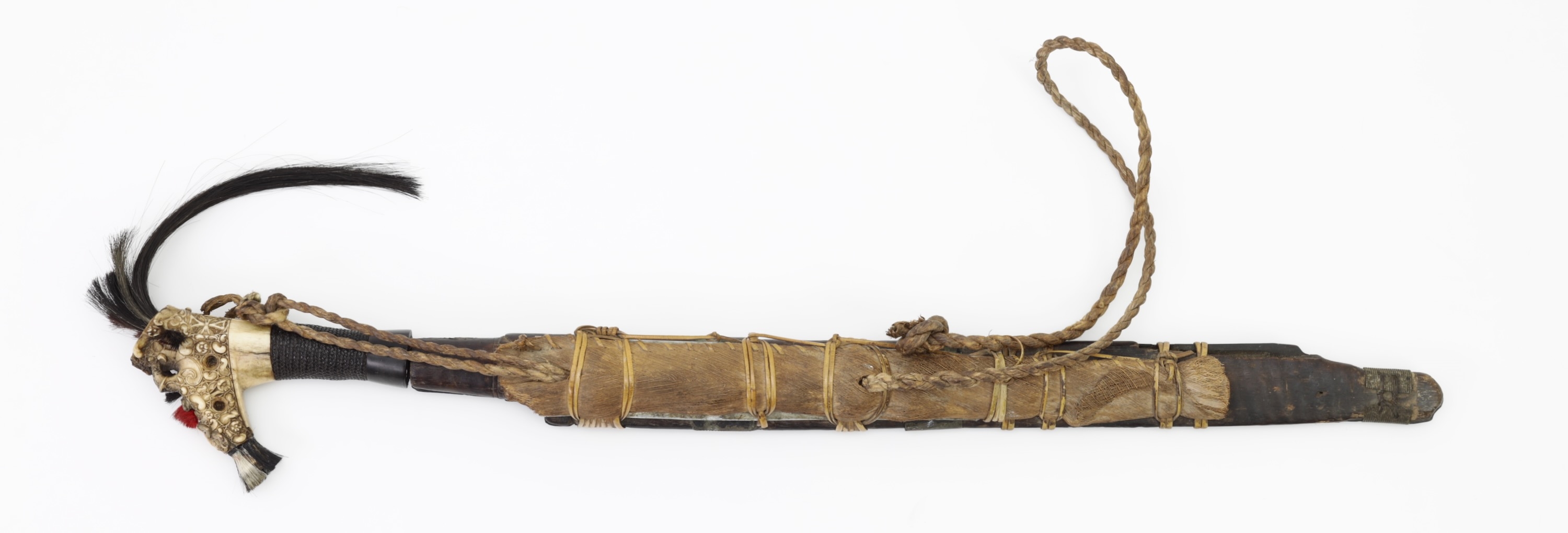

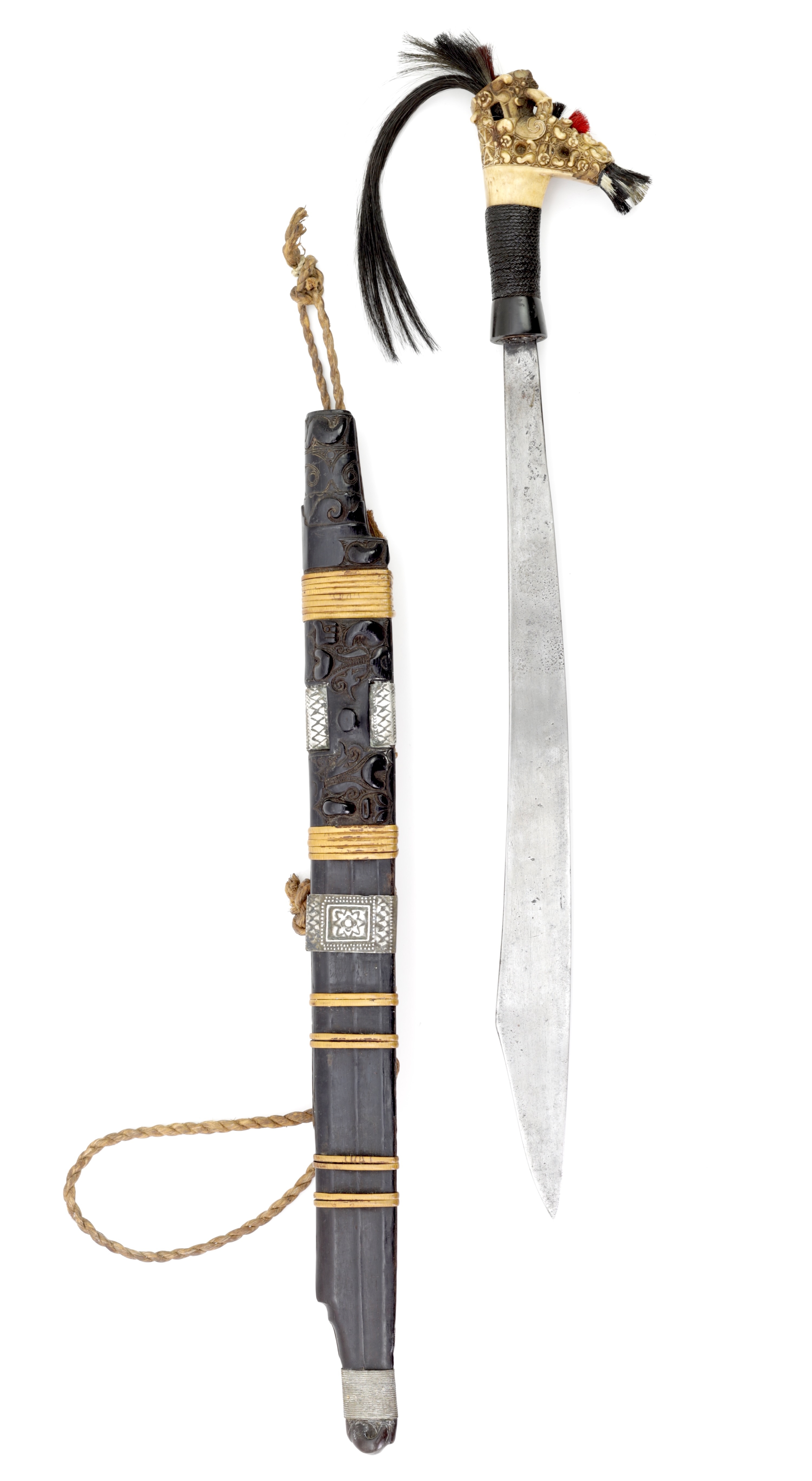

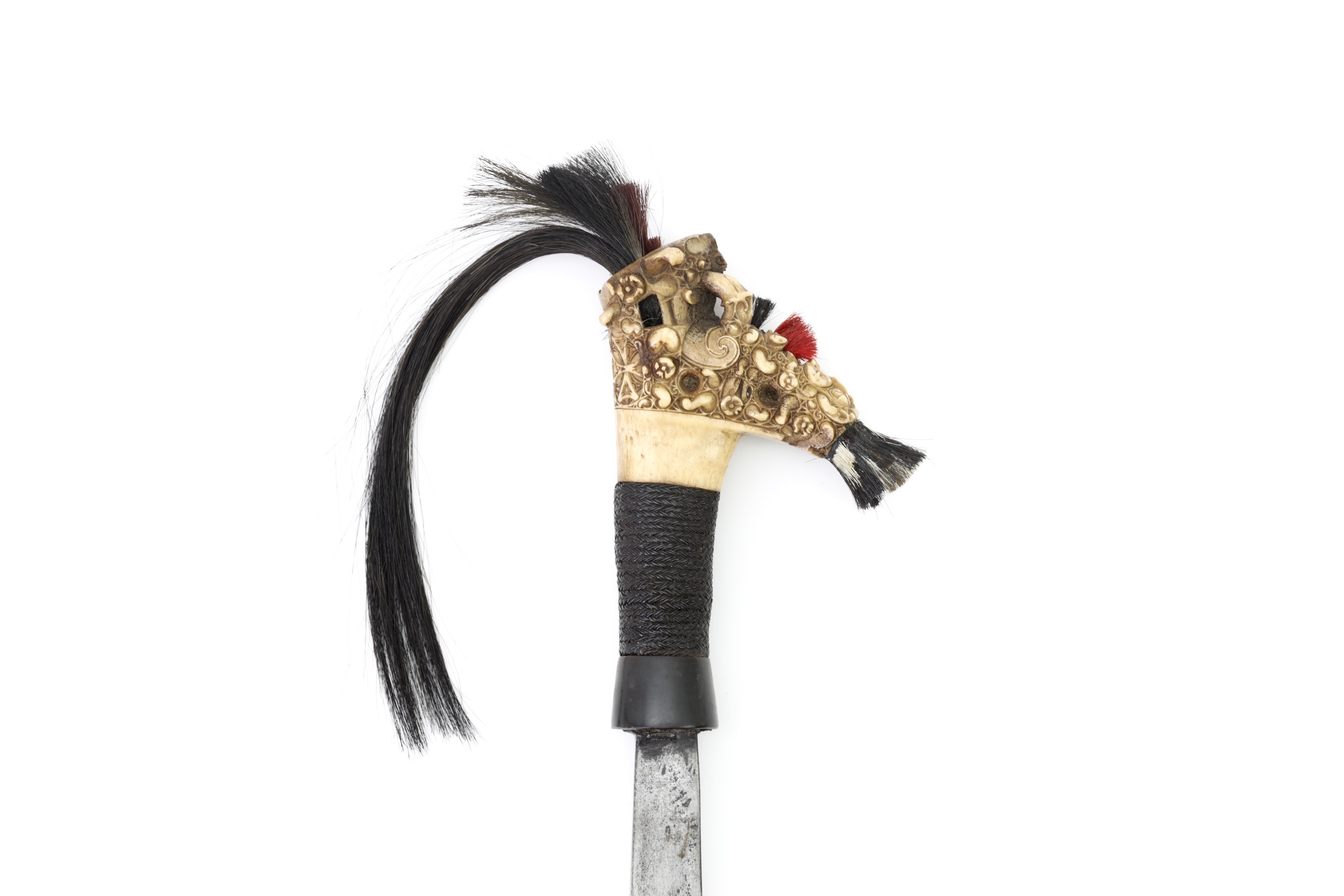
A rare type of dagger from South Kalimantan, loosely based on Islamic daggers seen worn by traders.
This peculiar sword was used by the Garo people of Assam for fighting, clearing the jungle, and animal…

